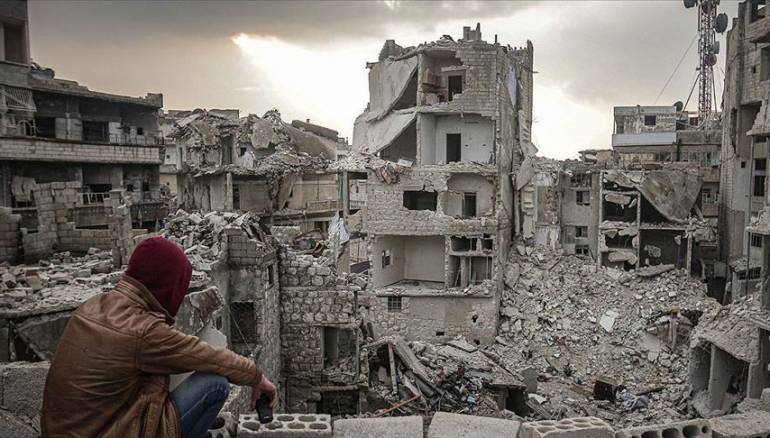The Assad regime with top-ranking military officials established the People's Committees, which mostly consisted of Alawite citizens
June 24, 2020

Source: zaman alwsl
Many figures involved in the means established by Syria’s Bashar al-Assad regime to brutally suppress the civil war that started in March 2011 have been implicated as war criminals.
War crimes committed by the Assad regime, including the use of chemical weapons, rape, torture, the targeting of civilian settlements and the deployment of terrorist organizations, have been recorded in reports by the United Nations and independent human rights organizations.
Who gave the instructions for committing these war crimes and the chain of command the regime members followed is unclear.
According to information obtained by Anadolu Agency’s correspondents, on the instructions of Assad, the head of the regime and armed forces commander in chief, and the country’s National Security Bureau, it was decided to establish a team of high-level security officials called the Crisis Cell in the capital Damascus to suppress the peaceful demonstrations that began in March 2011.
Chaired by the then-Chief of General Staff Hassan Ali Turkmani, the Crisis Cell consisted of a Defense Minister Dawoud Rajiha, Deputy Defense Minister Assef Shawkat, Interior Minister Mohammad al-Shaar, head of general intelligence Ali Mamlouk, political security department, military intelligence and air intelligence.
Along with the Regime Protection Unit, the Criminal Security Department, the police and special forces units, Baath Party elements and organizations and militias affiliated with the Defense Ministry, the consortium structured under the control of this core staff consisted of four intelligence units operating across Syria: the Political Security Branch, the Military Intelligence Branch, the General Intelligence Directorate and the Air Intelligence Directorate.
The security committees, which were established by Assad and have structures in every region and province, were among the institutions that were tasked with suppressing the demonstrations with full authority from the Crisis Cell.
These committees, suppressing the peaceful demonstrators on a provincial and regional basis, formed teams consisting of military, intelligence, police and special forces and regime protection personnel.
The teams implemented a policy of arbitrary arrest and execution by finding those who attended the demonstrations, those who organized them and those who supported them.
The Assad regime with top-ranking military officials established the People’s Committees, which mostly consisted of Alawite citizens.
Recalling top-ranking military officials to active duty, the regime established the People’s Committees, which mostly consisted of Alawite citizens.
Many civilians involved in crimes who were also called Shabiha paramilitary militants were deployed by the People’s Committees and other security institutions.
Many figures and military officials took charge of the security mechanisms established by the regime to suppress the peaceful demonstrations that began in 2011.
These security structures, which are directly linked to Assad, soon turned into crime-making mechanisms that acted independently of the civil or military judiciary.
A “Black List” showing the figures involved in this crime-making mechanism was published in 2019 by the Pro-Justice organization with the contribution of many lawyers and officers, including former Syrian Prime Minister Riyad Farid Hijab.
Also, the National Coalition for Syrian Revolutionary and Opposition Forces submitted a list of war criminals to the
International Criminal Court.
AA
